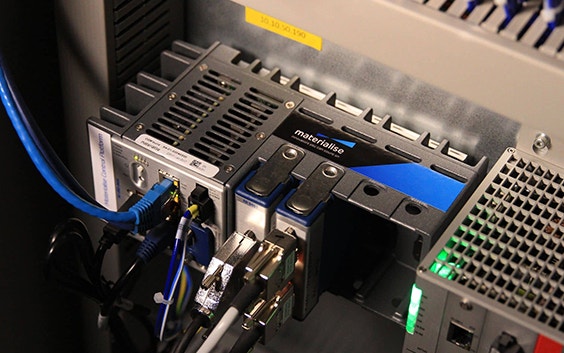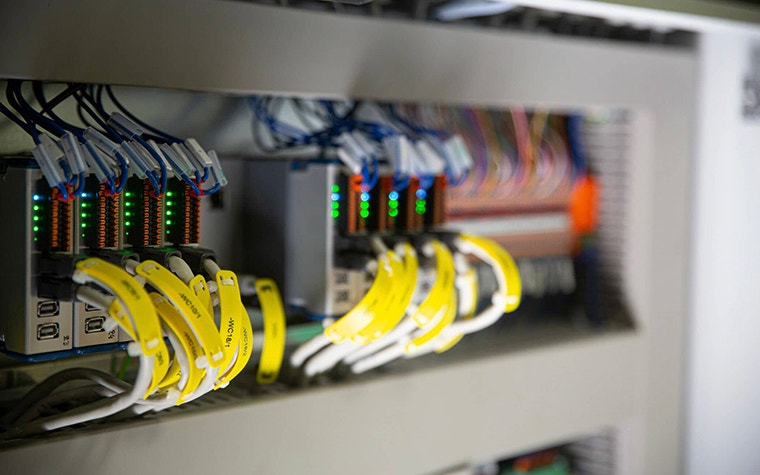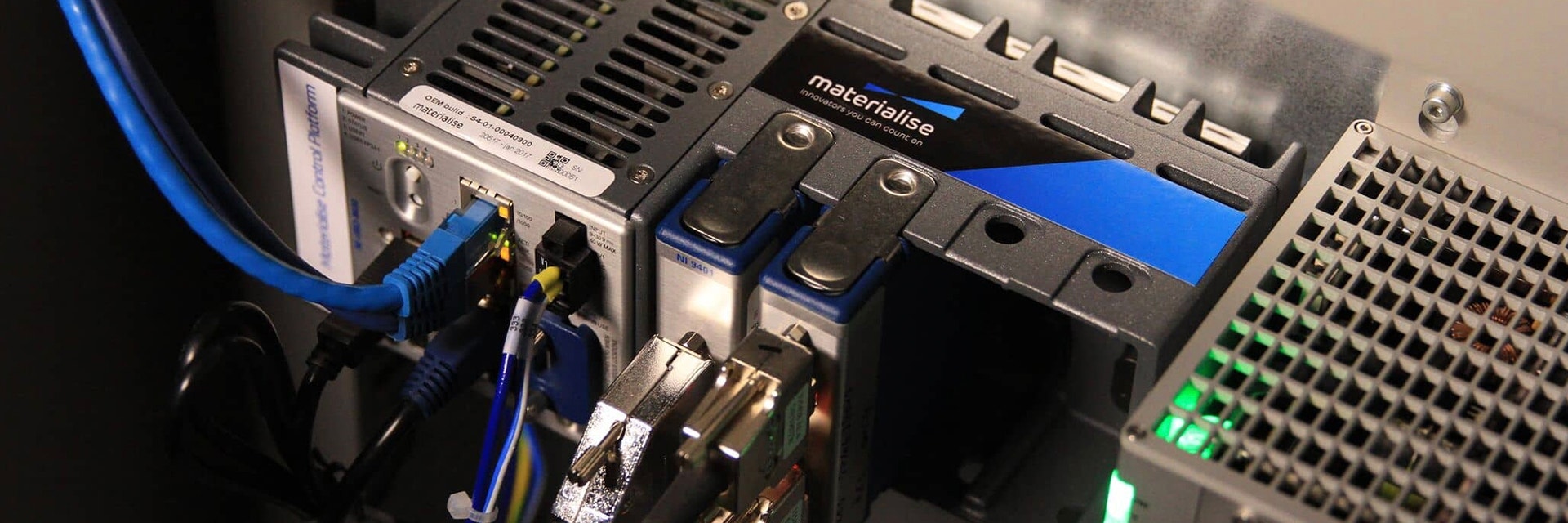
INTERVIEW
How Materialise Research Makes Multi-Laser 3D Printers Accessible with Future-Proof Software
Modern technology evolves at a rapid pace. So, what is the next evolution of 3D printing? A major goal for many in our industry is boosting productivity to ultimately scale operations. Materialise’s software research team predicts that multi-laser machines will be key in enabling 3D printing factories to accomplish this goal.
In this blog, we’ll dive into this topic with Tom Craeghs, Research Manager within our Central Research & Technology department. Read on to discover the advantages and challenges of multi-laser machines, as well as how advancements in software will enable these printers and their associated productivity to become a reality.


Hi, Tom. Let’s begin with the why. Why is it important to innovate in the area of multi-laser 3D printers?
Tom Craeghs: 3D printing is evolving rapidly, and it’s crucial that we keep our solutions future-proof to keep up with the latest innovations in the industry. We see that multi-laser 3D printers would introduce two major benefits to 3D printing workflows. Immediately, users will experience improved productivity, but once the process of printing with multiple lasers is further optimized, they will have more control than ever before.
The widespread use of multi-laser printers for metal additive manufacturing (AM) isn’t far off. 3D printing factories should already start researching these productivity-boosting alternatives and identifying how they could introduce multiple lasers into their production within the next couple of years.
At Materialise, we’re empowering our customers to do so by enabling our solutions to work seamlessly with multi-laser machines. In fact, our solutions will be available by the end of this year. We’re currently testing the solutions with our partners.
What value do multi-laser 3D printers bring to AM production?
Tom: Although we see more and more multi-laser printers introduced to the market, single-laser printers are certainly the most common. Once we start integrating multi-laser printers into our productions, the first advantage we can expect will be increased productivity.
Adding more valves to a car engine results in faster vehicles; with multiple lasers, we see a very similar idea. The more lasers a machine has, the quicker your print speed. And then, of course, the quicker your machines are running, the more your production would be able to accomplish. Multi-laser machines and increased productivity go hand in hand.
There seems to be a kind of consensus that the maximum number of lasers per scan field is four. Larger printers can hold multiple scan fields, thus increasing the number of lasers per machine by four with each additional scan field. Users can expect an increase in their machine’s productivity by 30-40% per additional laser with optimal parameters.


Tom: This improved speed leads to numerous advantages. Accelerated printing means lower costs per part, so applications that were previously not worth the cost of producing via AM could now become cost-efficient to 3D print. We’ll also see part quality go up. Having enhanced control over multiple lasers allows machine operators to optimize the use of heat in the build ― thus allowing parts to cool at a slower rate and avoiding errors that arise from extreme thermal differences.
What challenges must the industry address to make multi-laser printers reliable printing methods?
Tom: Multi-laser machines are not yet being widely used because there are indeed challenges that we need to overcome.
One major hurdle is optimizing the laser scheduling — we call it load balancing. The main purpose of using multiple lasers is to increase productivity, so we need to ensure that each laser carries out more or less an equal portion of the work. If laser A completes melting its portion of the layer before the other lasers have finished, laser A should assist the others. In other words, simply dividing the scan fields into four equal sections does not allow multi-laser machines to reach their full potential.
However, successfully achieving a balanced load comes with challenges of its own. First, you must ensure that there’s enough space between the areas or zones being melted by the lasers. If they are too close together, you could experience overheating, which deforms the part, lingering gas that obscures other beams, or loose powder landing in another laser’s path. Intelligent software tools such as the ones we are developing in the Materialise Build Processor can overcome these hurdles by optimizing load balancing, ensuring the laser path for all lasers is being scanned against the gas flow, and avoiding overheating.
How is Materialise innovating to make multi-laser printers reliable?
Tom: Our team has been working tirelessly to prepare our software solutions for the arrival of multi-laser machines. Thanks to our research and development, our software range will soon have the capability to not only support this up-and-coming technology but to address challenges presented by it.
For example, determining the ideal parameters for successful builds when introducing a new technology takes up a lot of time and effort. The Materialise Build Processor will help users overcome this hurdle with a smart algorithm that determines which parameters would be most beneficial for a build on that particular machine, based on the user’s and machine manufacturer’s configurations. The algorithm proposes the optimal parameters that the user can either confirm or decline. If it’s not the right fit, the Build Processor offers another option, ensuring that users have control while optimizing build times, accuracy, and quality.
Additionally, the Materialise Control Platform will provide the fastest and most accurate multi-laser calibration available on the market. Calibrating multiple lasers per machine sounds like a daunting task — but it’s necessary to ensure the repeatability and quality required for manufacturing. The Control Platform can reduce the manual effort of this task to only 30 minutes, meaning that users can calibrate machines more often to further improve part quality and reduce downtime of the machine.


Tom: Plus, with this camera-based procedure, the software promptly corrects any lasers that stray from their assigned path during the print to keep the build as accurate as possible. In between machine maintenance checks, users can feel confident in the accuracy of their prints.
Multi-laser machines provide clear value within 3D printing productions. As others in the industry strive to develop capable printers of this kind, we’re right alongside them, ensuring that users will have the necessary software tools to make multi-laser printing as seamless as possible.
Share on:
You might also like
Never miss a story like this. Get curated content delivered straight to your inbox.
